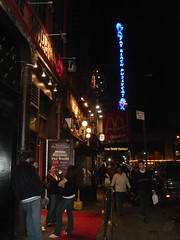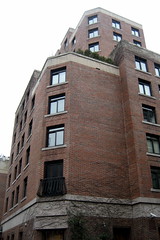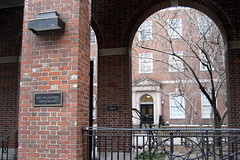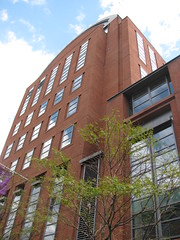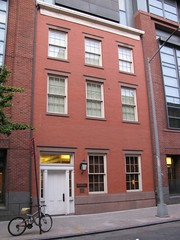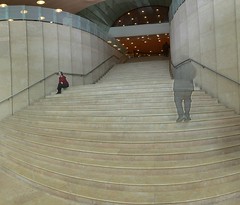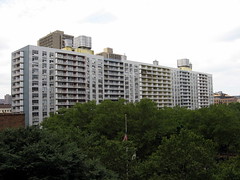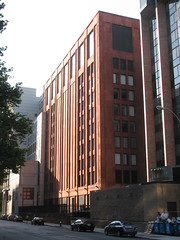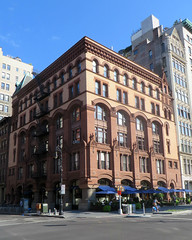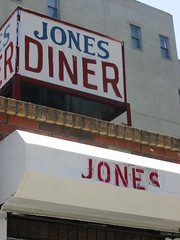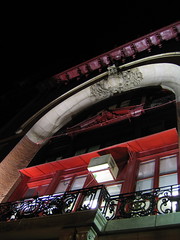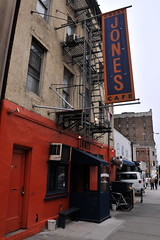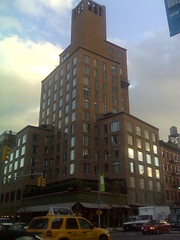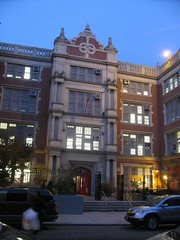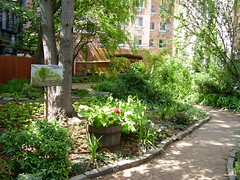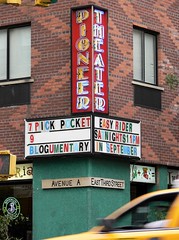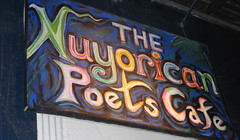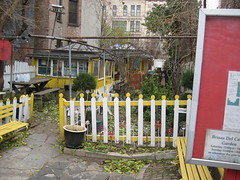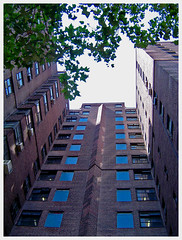Former Waverly Theatre
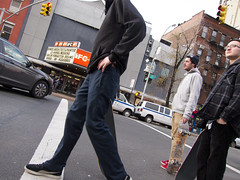
325: A theater since the 1930s, the building was originally an 1831 Universalist church. After a couple of denominational changes, it became a stained-glass factory, J. & R. Lamb Studios, in 1893. It became a cinema in 1937. Closed in 2001, it reopened as the Independent Film Channel's IFC Center.
It's a landmark in Hair: "I met a boy named Frank Mills...right here in front of the Waverly." Will Smith was arrested here in Six Degrees of Separation. Audience-participation midnight showings of The Rocky Horror Picture Show started here April 1, 1976 and soon spread across the country.
